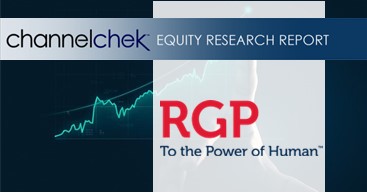Just 24 hours after data showed job openings surging to their highest level since November 2024, the American labor market delivered a jarring reality check. Private sector employment unexpectedly contracted by 33,000 positions in June, according to ADP’s Wednesday report—marking the first monthly decline since March 2023 and painting a starkly different picture of employment dynamics.
The contradiction between Tuesday’s robust job openings data (7.76 million available positions) and Wednesday’s payroll contraction illustrates the complexity of today’s labor market, where demand for workers remains strong but actual hiring has stalled dramatically.
ADP’s report revealed a troubling disconnect between employer intentions and actions. While May data showed companies posting abundant job openings, June hiring patterns suggest businesses are increasingly reluctant to pull the trigger on new hires. The 33,000 job loss significantly missed economist expectations for 100,000 new positions, representing a stunning 133,000-job swing from forecasts.
“Though layoffs continue to be rare, a hesitancy to hire and a reluctance to replace departing workers led to job losses last month,” explained Nela Richardson, ADP’s chief economist. This phenomenon—where companies maintain job postings but delay actual hiring decisions—reflects growing business uncertainty about economic conditions.
The May revision further underscored this trend, with private payroll gains reduced to just 29,000 from an initially reported 37,000, highlighting how even modest job growth has been weaker than initially perceived.
Service Sector Bears the Brunt
The June contraction was concentrated in service industries, with professional and business services shedding 56,000 positions and health and education losing 52,000 jobs. Financial services added to the decline with 14,000 fewer positions. These sectors, which typically drive white-collar employment growth, appear to be exercising extreme caution in their hiring strategies.
However, goods-producing industries provided some offset, adding 32,000 positions across manufacturing and mining operations. This divergence suggests that while consumer-facing and office-based businesses are pulling back, industrial sectors continue to see steady demand.
Geographically, the Midwest and West experienced the steepest declines, losing 24,000 and 20,000 jobs respectively, while the South managed modest growth of 13,000 positions. The Northeast saw minimal contraction of 3,000 roles.
The data revealed a striking pattern based on company size. Large employers with over 500 employees actually expanded payrolls by 30,000 positions, suggesting that well-capitalized companies continue to invest in talent acquisition. Conversely, small businesses with fewer than 20 employees accounted for 29,000 lost positions, indicating that smaller enterprises are bearing the brunt of economic uncertainty.
This divergence reflects different risk tolerances and financial capabilities, with smaller businesses typically more sensitive to economic headwinds and policy uncertainties.
Wage Growth Momentum Fades
Adding to concerns, annual wage growth decelerated for both job stayers and job switchers. Workers remaining in their positions saw pay increases of 4.4%, down from 4.5% in May, while those changing jobs experienced wage growth of 6.8%, declining from 7.0%. This moderation in wage pressures could provide some relief for inflation-conscious Federal Reserve officials but signals weakening worker bargaining power.
The stark contradiction between job openings and actual hiring creates a challenging environment for Federal Reserve policymakers already under pressure from the Trump administration to cut interest rates. While Tuesday’s job opening surge suggested labor market strength, Wednesday’s payroll contraction reinforces concerns about economic momentum.
Financial markets will closely watch Thursday’s official Bureau of Labor Statistics employment report, which economists expect to show 110,000 nonfarm payroll additions and unemployment rising to 4.3%. If the government data confirms ADP’s weak showing, it could significantly strengthen the case for monetary easing.
The divergent signals—strong job demand but weak hiring execution—suggest an economy in transition, where businesses remain optimistic enough to post openings but cautious enough to delay actual hiring decisions. This hesitancy may reflect concerns about tariff impacts, regulatory changes, or broader economic uncertainty.
For investors and policymakers alike, the labor market’s mixed messages underscore the importance of looking beyond headline numbers to understand the underlying dynamics driving employment trends in an increasingly complex economic environment.















